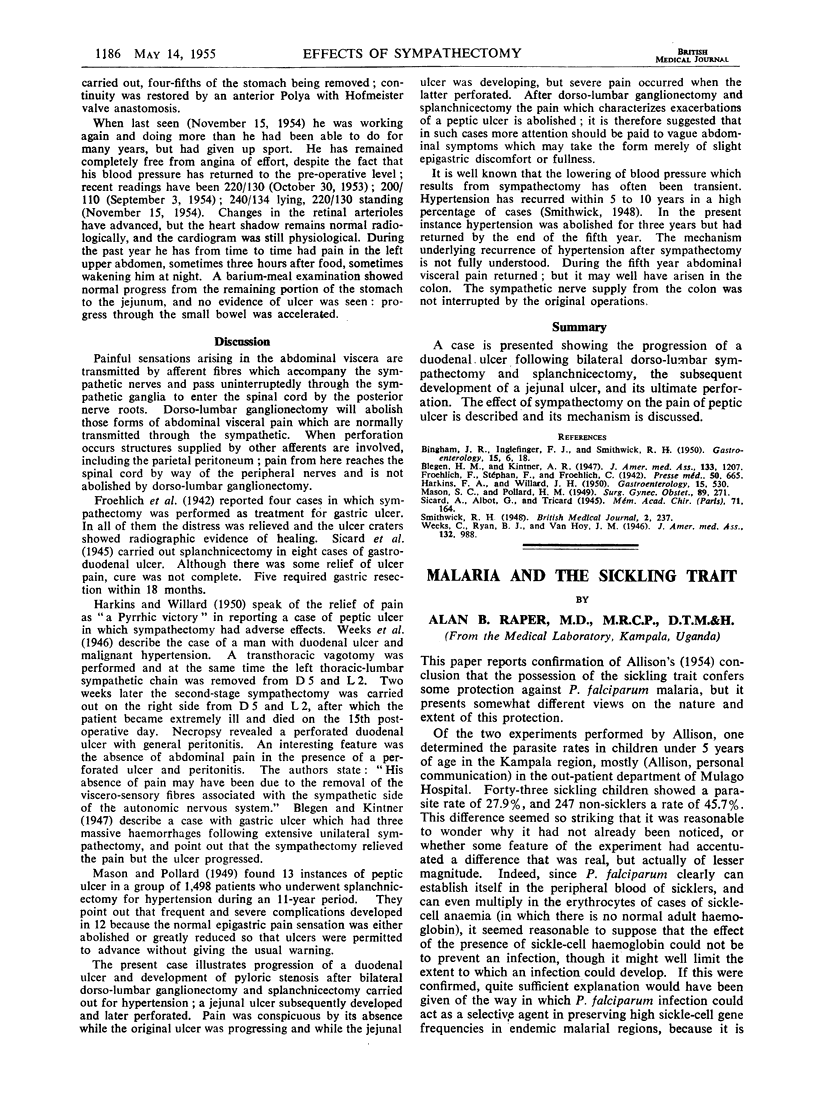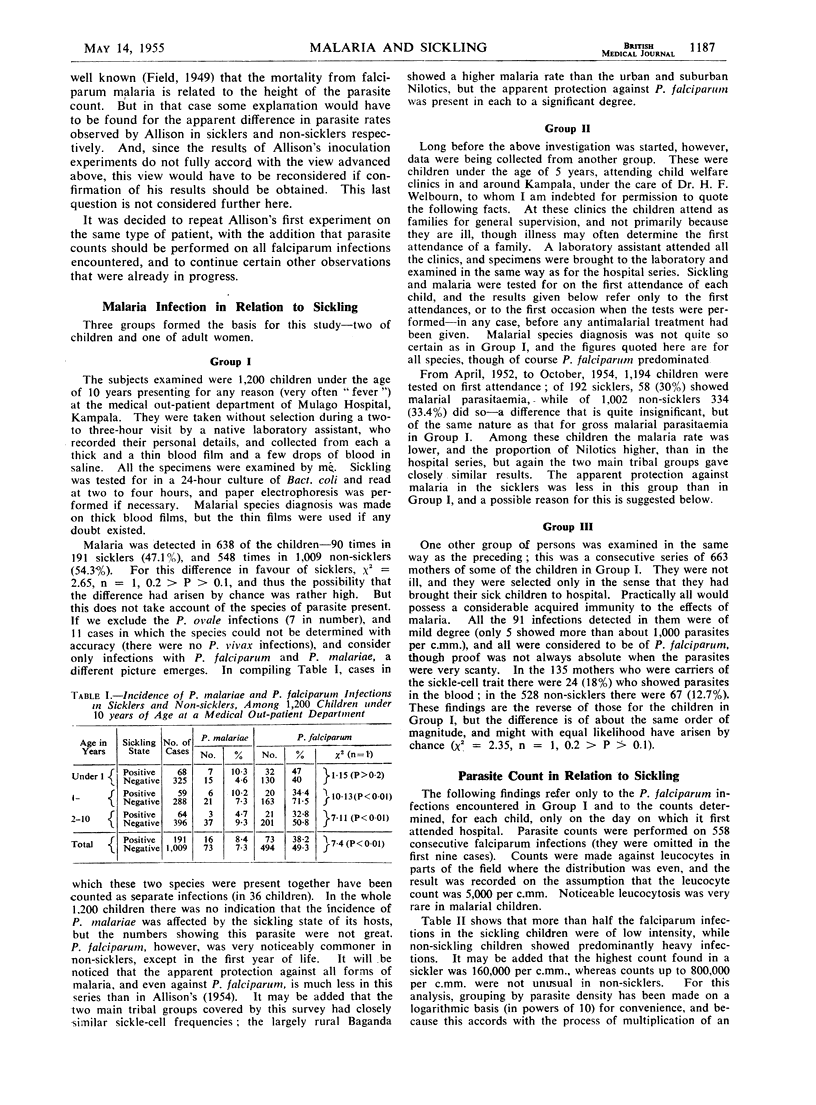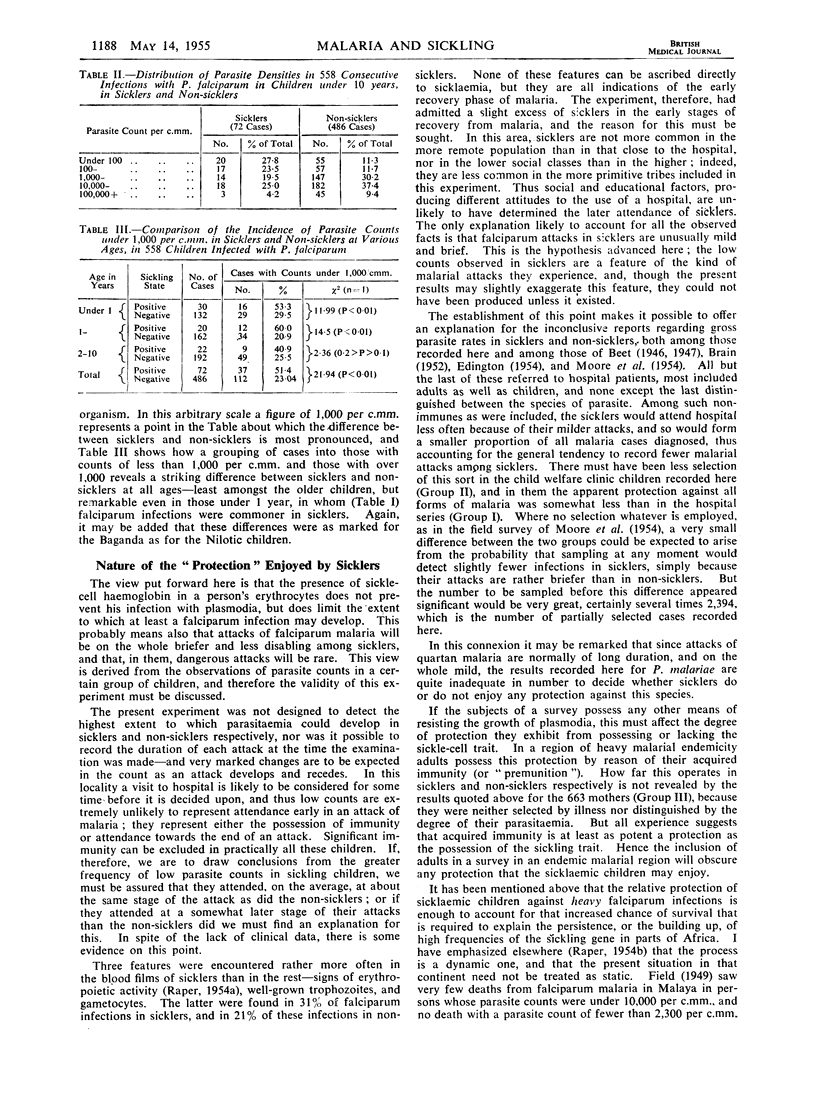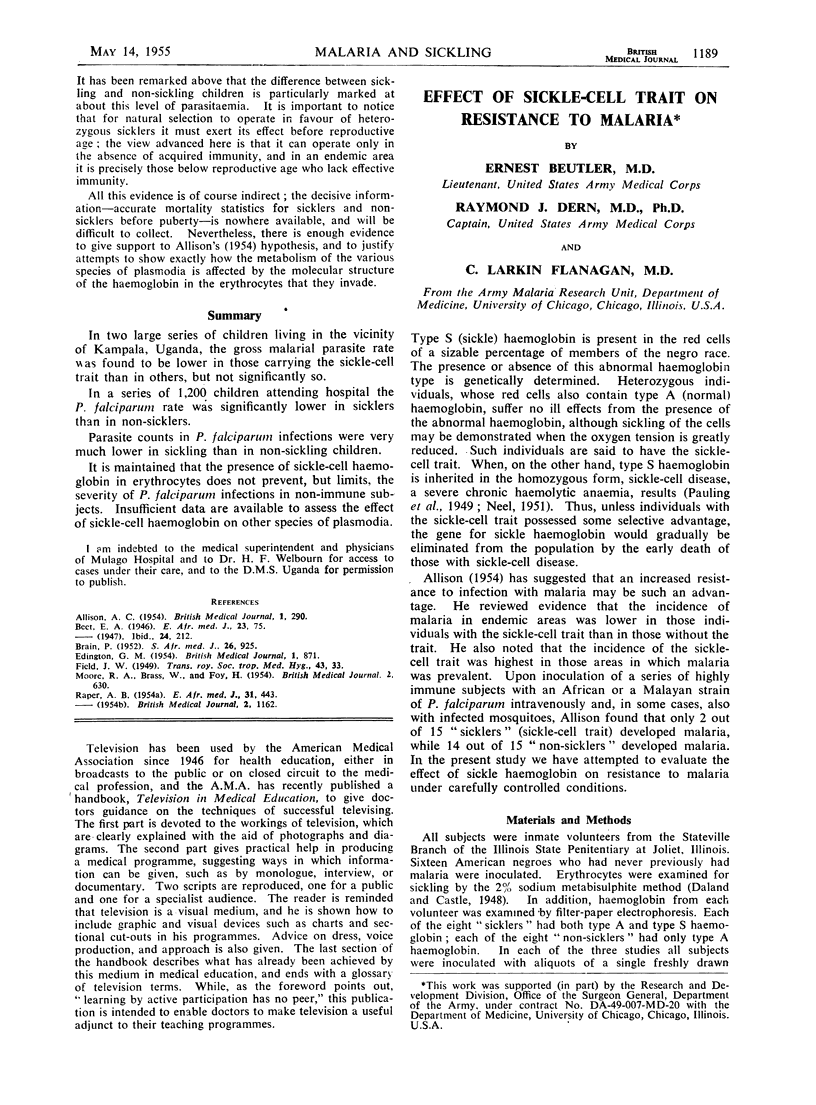Full text
PDF



Selected References
These references are in PubMed. This may not be the complete list of references from this article.
- ALLISON A. C. Protection afforded by sickle-cell trait against subtertian malareal infection. Br Med J. 1954 Feb 6;1(4857):290–294. doi: 10.1136/bmj.1.4857.290. [DOI] [PMC free article] [PubMed] [Google Scholar]
- BRAIN P. The sickle cell trait; its clinical significance. S Afr Med J. 1952 Nov 22;26(47):925–928. [PubMed] [Google Scholar]
- RAPER A. B. Simple principles in the haematological diagnosis of sickle cell anaemia. East Afr Med J. 1954 Oct;31(10):443–449. [PubMed] [Google Scholar]


